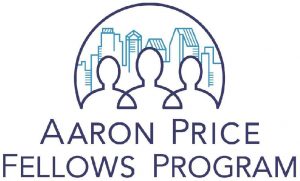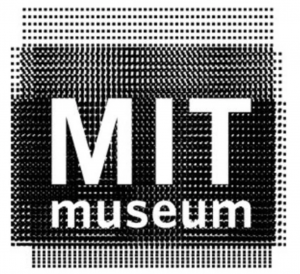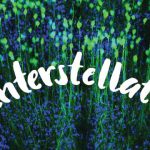At the Salk Institute
Salk March of Dimes High School Science Day (February, 2020-Present)
 Held interactive presentations for high school students in San Diego County interested in studying science. This event hosts 250 students and teachers every spring and 25 schools each year. To see the 2021 event please click here. Learn More »
Held interactive presentations for high school students in San Diego County interested in studying science. This event hosts 250 students and teachers every spring and 25 schools each year. To see the 2021 event please click here. Learn More »
Aaron Price Fellows Visit (January, 2020)
 40 Students spent a half-day at the Salk hearing from esteemed scientists and touring labs. This is typically a first-time exposure to scientific academia for students in this acclaimed leadership program.
40 Students spent a half-day at the Salk hearing from esteemed scientists and touring labs. This is typically a first-time exposure to scientific academia for students in this acclaimed leadership program.
Said In STEM (January 2019 – Present)
 Said in STEM is an initiative founded by Mackenzie Lemieux, a former research technician in the Tye Lab. Students Advocating for Increased Diversity (SAID) in STEM is an organization that educates the community about equity, diversity, and inclusion in STEM through seminar series’ and Wikipedia Edit-A-Thons at institutions across America. Learn More »
Said in STEM is an initiative founded by Mackenzie Lemieux, a former research technician in the Tye Lab. Students Advocating for Increased Diversity (SAID) in STEM is an organization that educates the community about equity, diversity, and inclusion in STEM through seminar series’ and Wikipedia Edit-A-Thons at institutions across America. Learn More »
Wikipedia edit-a-thon at UCSD, Geisel Library (March, 2020)
 Guest Speaker: Maryam Zaringhalam Ph.D. @webmz, AAAS Science and Technology Policy Fellow. Learn More »
Guest Speaker: Maryam Zaringhalam Ph.D. @webmz, AAAS Science and Technology Policy Fellow. Learn More »
Wikipedia edit-a-thon at Salk Institute (September, 2019)
 Guest Speaker: Pamela Cosman Ph.D., Professor in the Department of Electrical and Computer Engineering at UCSD.
Guest Speaker: Pamela Cosman Ph.D., Professor in the Department of Electrical and Computer Engineering at UCSD.
Stories of WiN Podcast
 Project by Nancy Padilla-Coreano, Ph.D., Megan Kirchgessner, Catie Profaci and Marley Rossa to profile Women in Neuroscience. Learn More »
Project by Nancy Padilla-Coreano, Ph.D., Megan Kirchgessner, Catie Profaci and Marley Rossa to profile Women in Neuroscience. Learn More »
At the Massachusetts Institute of Technology (MIT)
Getting Emotional: How the Amygdala Learns the Difference Between Good and Bad.
Calhoon GG, Tye KM.
Frontiers for Young Minds:2018 Dec 13 Read PDF
Calhoon GG, Tye KM.
Frontiers for Young Minds:2018 Dec 13 Read PDF
Abstract
How do you feel when you hear the music of an ice cream truck? What about when you hear your alarm clock in the morning? The first might make you feel happy or excited and might even cause you to run toward the truck to get some ice cream. The second might annoy you or make you want to put your pillow over your ears! Why do you think these two sounds can cause such different emotional reactions? How can your brain tell when you should expect something pleasant or unpleasant? In our study, we investigated how emotional learning happens in a brain region called the amygdala. We found that learning about positive and negative events is divided between two different groups of amygdala cells.![]()
MIT Museum: The Beautiful Brain: Drawings of Santiago Ramón y Cajal exhibit. (April – December 2018)
 Work from various Tye Lab members (Praneeth Namburi, Anna Beyeler, Gillian Matthews) was displayed alongside Cajal’s drawings. Learn More »
Work from various Tye Lab members (Praneeth Namburi, Anna Beyeler, Gillian Matthews) was displayed alongside Cajal’s drawings. Learn More »
Girl’s Day, MIT Museum, Cambridge, MA (November 3, 2018)
 The Tye Lab collaborated with other members of the MIT community to set up three stations at the Girl’s Day event at the MIT Museum, a day focused on exposing young girls to science. Our stations included interactive activities to learn about the parts of a neuron, brain structures, and memory, and the brain. Learn More »
The Tye Lab collaborated with other members of the MIT community to set up three stations at the Girl’s Day event at the MIT Museum, a day focused on exposing young girls to science. Our stations included interactive activities to learn about the parts of a neuron, brain structures, and memory, and the brain. Learn More »
MIT Summer Research Program
 AZA Allsop, for Ph.D. student, acted as a mentor and speaker in this program from 2012-2016. The Tye lab has hosted nine students affiliated with this program.
AZA Allsop, for Ph.D. student, acted as a mentor and speaker in this program from 2012-2016. The Tye lab has hosted nine students affiliated with this program.
Interstellate Magazine (founded and curated by Caitlin M. Vander Weele)
 Science and outreach and education through art (@Interstellate_) with featured art-work from members of the Tye Lab.
Science and outreach and education through art (@Interstellate_) with featured art-work from members of the Tye Lab.
Seminar series at MIT (January-April, 2019)
 Guest professors and physicians were invited for a seminar, held each week, to discuss their observations and experiences of diversity in science and medical fields. Speakers included:
Guest professors and physicians were invited for a seminar, held each week, to discuss their observations and experiences of diversity in science and medical fields. Speakers included:
- Eve Marder, PhD
- Marcy Bolster, MD
- Mary Montgomery, MD
- Lindsay MacFarlane, MD
- Edmund Bertschinger, PhD
- Kay Tye, PhD
